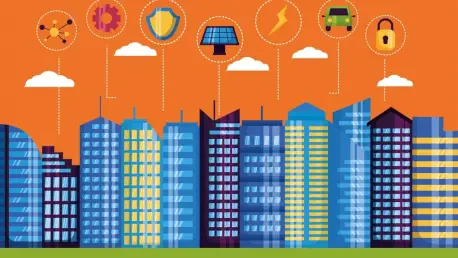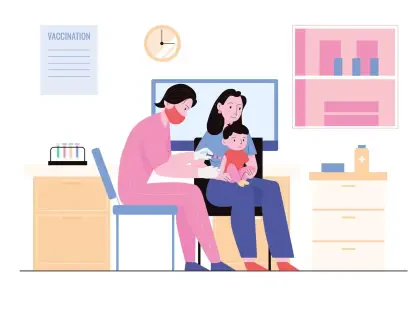Imagine a bustling urban center where traffic flows seamlessly, streetlights dim automatically when no one is around, and waste collection trucks only travel when bins are full, all thanks to an invisible network of connected devices working tirelessly behind the scenes to make life easier. This is the reality of smart cities, urban environments that harness cutting-edge technology to tackle everyday challenges and improve the quality of life for millions. At the heart of this transformation lies the Internet of Things (IoT), a system of interconnected devices equipped with sensors and connectivity that gather and share data in real time. By enabling communication between objects and systems, IoT empowers cities to optimize resources, reduce costs, and enhance sustainability. The profound impact of this technology is reshaping how urban spaces operate, making them more responsive to the needs of residents and paving the way for a more efficient future.
Transforming Urban Infrastructure with IoT
Enhancing Efficiency through Real-Time Data
The integration of IoT into urban infrastructure marks a significant shift in how cities manage their core systems. By embedding sensors into essential services like traffic control, public lighting, and water distribution, municipalities can monitor conditions as they happen and respond with precision. This real-time data collection allows for dynamic adjustments, such as rerouting traffic during congestion or reducing water waste by detecting leaks instantly. The result is a more agile urban environment where resources are allocated based on actual demand rather than static schedules. Beyond operational improvements, this capability translates into substantial cost savings for city administrations, freeing up budgets for other critical needs. Moreover, the data-driven approach fosters a deeper understanding of urban patterns, enabling long-term planning that anticipates future challenges. As cities continue to grow, the ability to adapt quickly through IoT becomes not just an advantage but a necessity for maintaining order and efficiency in increasingly complex environments.
Boosting Sustainability in Urban Operations
Sustainability stands as a cornerstone of smart city initiatives, and IoT plays a pivotal role in achieving environmental goals. Smart lighting systems, for instance, adjust brightness based on pedestrian or vehicular presence, slashing energy consumption without compromising safety. Similarly, IoT-enabled waste management optimizes collection routes by tracking bin fill levels, ensuring trucks only deploy when necessary, thus cutting fuel use and emissions. These innovations contribute to a smaller carbon footprint, aligning urban growth with global efforts to combat climate change. Additionally, the technology supports water conservation by monitoring usage and identifying inefficiencies in distribution networks. The cumulative effect of these measures is a city that operates with minimal environmental impact while maintaining high service standards. As urban populations swell, embedding IoT into infrastructure offers a scalable solution to balance development with ecological responsibility, ensuring that progress does not come at the expense of the planet.
Real-World Applications and Future Potential
Improving Quality of Life with Practical Solutions
IoT’s influence on smart cities extends far beyond infrastructure to directly enhance the daily experiences of residents. Smart parking systems, powered by IoT and artificial intelligence, alleviate the frustration of finding a spot by guiding drivers to available spaces in real time, reducing traffic congestion and associated pollution. In public health and safety, IoT sensors monitor air quality and noise levels, providing authorities with actionable data to address environmental hazards promptly. This means cleaner air and quieter neighborhoods, directly impacting citizen well-being. Furthermore, in coastal regions, smart moorings manage resources like electricity and water for boats, streamlining operations and even allowing for advance bookings through connected platforms. These practical applications demonstrate how IoT addresses both mundane and specialized urban needs, creating a more livable environment. The technology’s ability to touch diverse aspects of city life underscores its versatility and potential to transform urban living on a granular level.
Driving Innovation for Tomorrow’s Cities
Looking ahead, the role of IoT in smart cities promises to expand into even more innovative territories, shaping the urban landscapes of the future. Emerging applications could include advanced disaster response systems where IoT devices predict and mitigate risks by analyzing data from weather patterns or structural integrity in real time. Energy grids, already benefiting from smart metering, may evolve into fully autonomous networks that balance supply and demand with minimal human intervention, further enhancing efficiency. Public transportation could see revolutionary changes as IoT integrates with autonomous vehicles, optimizing routes and reducing wait times for commuters. These forward-thinking solutions highlight the adaptability of IoT to meet evolving urban challenges. As cities invest in this technology, the focus remains on creating interconnected ecosystems that prioritize both innovation and inclusivity, ensuring benefits reach all residents. The journey of IoT in urban development is just beginning, with endless possibilities to redefine how cities function and thrive.
Reflecting on Past Progress and Next Steps
Reflecting on the strides made, it’s evident that IoT has already begun reshaping urban environments by integrating seamlessly into critical systems, driving efficiency, and fostering sustainability. Cities that adopted this technology early saw marked improvements in resource management and resident satisfaction, setting a precedent for others to follow. The success of past initiatives in areas like smart lighting and waste optimization provides a blueprint for scaling these solutions globally. Moving forward, the emphasis should be on expanding access to IoT infrastructure, particularly in underserved regions, to ensure equitable growth. Collaboration between governments, tech providers, and communities will be essential to address implementation challenges and tailor solutions to local needs. Investing in robust cybersecurity measures to protect IoT networks from threats will also be critical as reliance on connected systems grows. Ultimately, the focus must remain on leveraging past achievements to build smarter, more resilient cities that prioritize both innovation and the well-being of every citizen.









